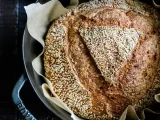What is Chocolate?
December 6, 2023Chocolate is a food composed of cocoa solids and cocoa fat, used widely across desserts, candies, and beverages.
Maya and Toltec peoples first introduced cacao tree cultivation 3,000 years ago, believing it to be food of the gods; these cultures would later bury dignitaries with bowls full of chocolate as their final resting place.
Origin
Chocolate is produced by using the seeds from Theobroma cacao trees found throughout South America’s deep tropical regions, native to deep tropical regions such as Costa Rica. The name chocolate derives from an Aztec word meaning bitter food of the gods which literally means bitter food of gods – the cacao tree being one such tree species native to South America and with roots dating back over 3 centuries ago!
Chocolate was first brought to Europe many millennia ago and initially consumed mostly by royalty, later becoming widely used for medicinal and ritualistic purposes.
Coenraad Johannes van Houten of the Netherlands is widely credited with creating the first solid chocolate bar around 1828, when he developed a process to press cocoa butter from ground and roasted beans into cocoa powder, creating the base for solid chocolate production. Since then, solid chocolate production has become more accessible. Today it can be found everywhere from candy bars, truffles and cookies to hot beverages like cocoa and coffee and is widely consumed today as a highly refined product.
Flavors
Chocolate is an extremely versatile flavor. It can be tailored to fit the occasion with alcohol-based extracts and various flavored oils that are readily available at grocery stores, pairing well with coconut, almond and hazelnut flavors; brandy amaretto rum are among the many beverages that pair nicely. Chocolate also lends itself to use in ice cream recipes as well as truffles and pralines candies – ideal additions for special events!
Chocolate adds sweetness and rich texture to savory recipes, lending its sweet yet decadent texture as a glaze for meat dishes or mole sauces.
As a dessert, chocolate pairs well with almost every flavor, but vanilla stands out. By adding pure or artificial vanilla flavoring to chocolate, its smooth and light taste becomes enhanced further. Vanilla also pairs nicely with fruit flavors such as oranges, lemons, grapefruits as well as tart fruit pulps such as cranberries. Furthermore, vanilla can even be added to beverages like coffee and tea!
Ingredients
Chocolate contains cocoa solids, sugar, milk or an lactose substitute and other ingredients including emulsifiers. Additionally it may include inclusions such as fruits nuts or salt and often has vanilla or other extract flavors added for flavoring purposes.
Cocoa beans are the key component in all chocolate. Produced in pods from Theobroma cacao trees, cocoa beans are then fermented, dried and roasted before being pressed to produce cocoa liquor.
Chocolate is created when cocoa solids and sugar are combined with an emulsifier (usually lecithin), then blended with an artificial emulsifier derived from castor oil called PGPR, an artificial emulsifier used to reduce lecithin requirements while simultaneously improving mouthfeel and increasing chocolaty goodness.
Process
Chocolate making is a multi-step process that starts by grinding cocoa beans into a paste known as chocolate liquor, then mixing this liquid with other ingredients such as sugar to produce chocolate.
Fermenting beans is one of the essential elements in creating chocolate’s unique aroma properties. Fermentation is a time consuming and energy intensive process that converts free tryptophan into biogenic amines such as 5-hydroxytryptamine and tryptamine that can then be converted by Maillard reactions during roasting into aroma precursors such as l-aldehyde and diacetyl neolactone (Fig 1).
Conching is an integral heating and mixing treatment used to develop flavor, create the ideal viscosity, eliminate volatile compounds and decrease excess moisture in chocolate [1, 2]. Furthermore, conching coats all solid cocoa solids with cocoa butter which has a dramatic impact on texture. Finally, tempering is used as a controlled crystallization process that ensures only cocoa butter form V is present, creating chocolate with desirable sheen and crisp bite.



